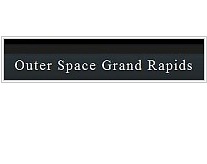Potential translates into numbers now available from an online decision-support tool. The Outer Space Grand Rapids website (www.outerspacegr.org) profiles areas of the city outside of downtown in order for neighborhood stakeholders to make informed decisions about managing growth and targeting investment. Grand Rapids’ urban or central city neighborhoods are not simply streets of housing where we live. They are the people and the places demonstrating how we live. Relationships, not isolated components, make for sustainable communities. Grand Rapidians have schools and branch libraries, places of worship, parks and public spaces, creeks and bridges, bike and bus routes, child care and health centers, fire stations and sewer separations and other city infrastructure. Across the socio-economic spectrum, our neighborhoods are the foreground to our daily lives. In our neighborhoods, we are neighbors to our adjacent neighborhoods. Together we are market forces, and we have demands which can be supported by retails goods and services nearby. This involves retention or recruitment of businesses. Within the City of Grand Rapids Master Plan 2002, there is a call for market analyses of neighborhood retail potential for the types of commercial spaces that traditional business areas have to offer. LISC convened the Neighborhood Commercial Market Profiles Task Force, and posted results online for the community’s use. In only 4 pages—one of which is a map—areas outside of downtown are shown in terms of: demographics, housing units, age of population, loan activity, trends, building permits, income diversity, workplace population, retail leakage and estimated square footage required to support such retail. The outer spaces of Grand Rapids are the environments of our lives. Check them out by visiting www.outerspacegr.org.
The Rapidian, a program of the 501(c)3 nonprofit Community Media Center, relies on the community’s support to help cover the cost of training reporters and publishing content.
We need your help.
If each of our readers and content creators who values this community platform help support its creation and maintenance, The Rapidian can continue to educate and facilitate a conversation around issues for years to come.
Please support The Rapidian and make a contribution today.

